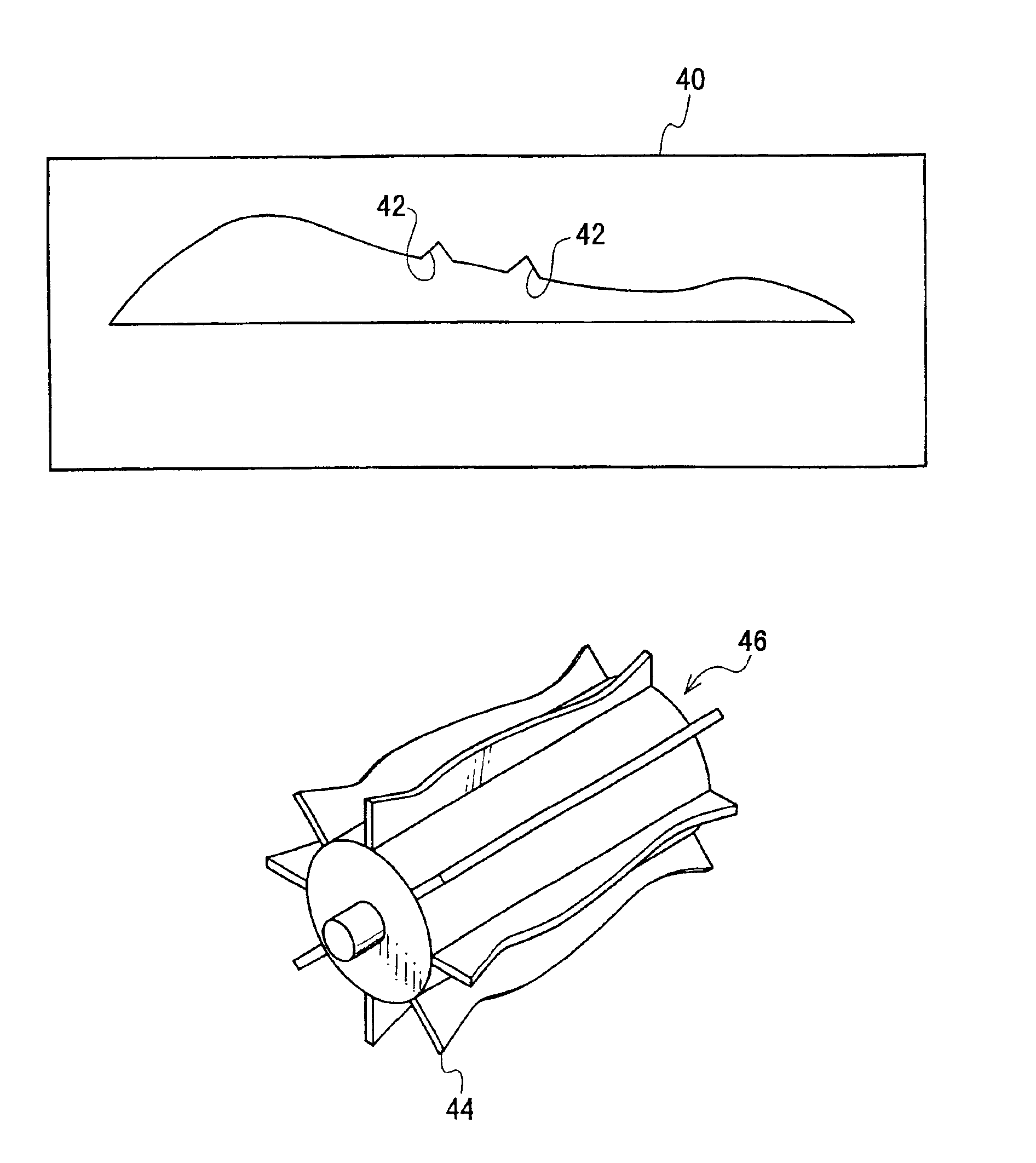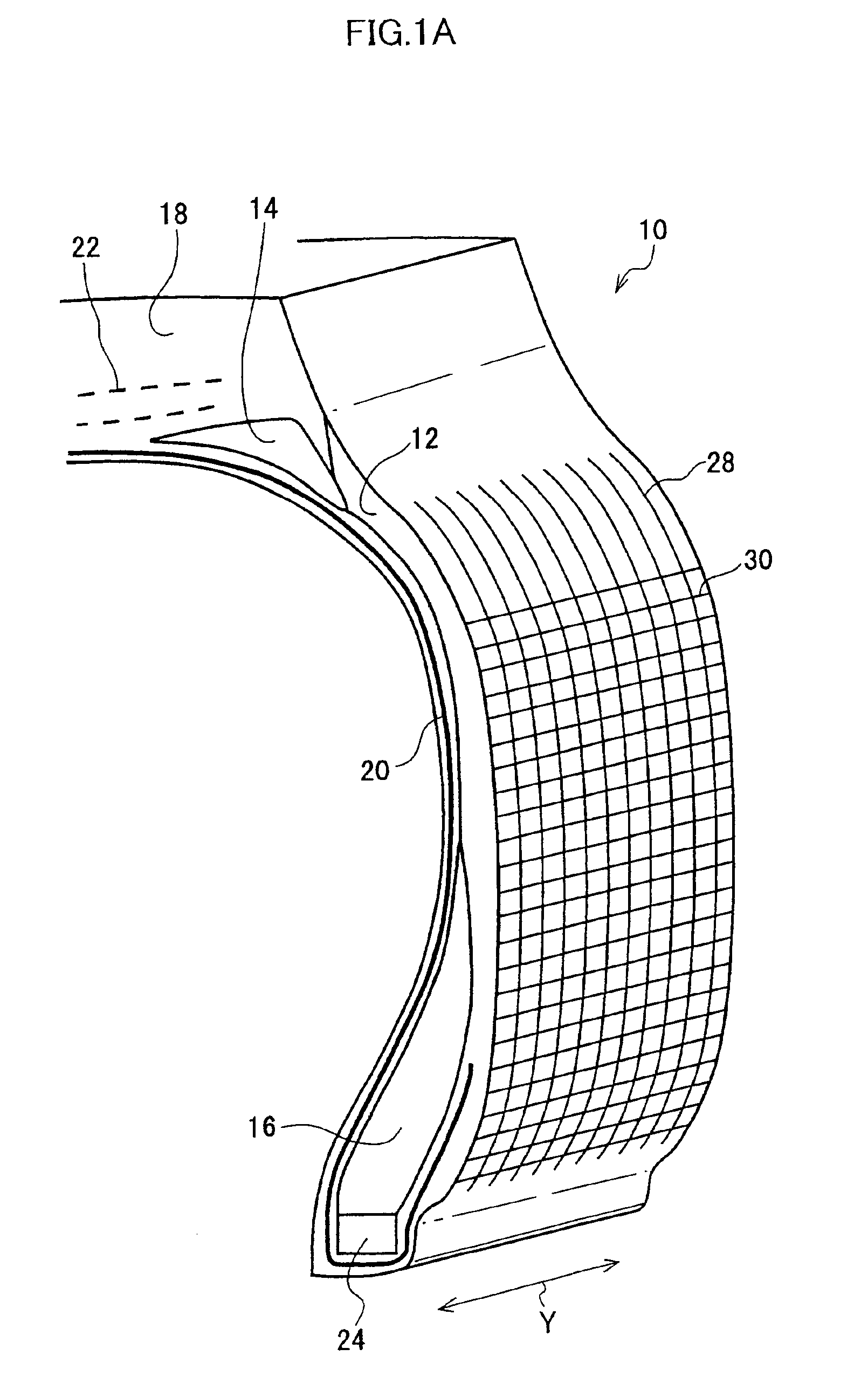Device for producing an unvulcanized rubber member for tire manufacturing
a technology of rubber parts and rubber parts, which is applied in the field of unvulcanized rubber parts for tire manufacturing, can solve the problems of deterioration of the external appearance of the fabricated tire, affecting the commercial value of the tire, and achieving the effect of efficient expulsion
- Summary
- Abstract
- Description
- Claims
- Application Information
AI Technical Summary
Benefits of technology
Problems solved by technology
Method used
Image
Examples
Embodiment Construction
[0045]FIG. 1A shows a cross section of a green tire 10 prior to vulcanization. In FIG. 1A, there are shown a sidewall portion structural member 12, a belt-cushion portion structural member 14, a bead-reinforcement portion structural member (bead filler) 16, a tread portion structural member 18, a carcass 20, a belt 22, and a bead core 24. Further, FIG. 1B is a schematic perspective view of the entire green tire including the portions shown in FIG. 1A (however, only structures necessary to understand FIG. 1A are shown).
[0046]As shown in FIG. 2, a plurality of grooves 28 which extend along a direction corresponding to a radial direction of a tire (direction of arrow X), and a plurality of rib-protrusions 30 that intersect the grooves 28 and extend in a direction corresponding to a circumferential direction of the tire (direction of arrow Y) are formed on a surface of the sidewall portion structural member 12 formed of unvulcanized rubber (i.e., a surface of the side wall portion struc...
PUM
| Property | Measurement | Unit |
|---|---|---|
| width | aaaaa | aaaaa |
| depth | aaaaa | aaaaa |
| depth | aaaaa | aaaaa |
Abstract
Description
Claims
Application Information
 Login to View More
Login to View More - R&D
- Intellectual Property
- Life Sciences
- Materials
- Tech Scout
- Unparalleled Data Quality
- Higher Quality Content
- 60% Fewer Hallucinations
Browse by: Latest US Patents, China's latest patents, Technical Efficacy Thesaurus, Application Domain, Technology Topic, Popular Technical Reports.
© 2025 PatSnap. All rights reserved.Legal|Privacy policy|Modern Slavery Act Transparency Statement|Sitemap|About US| Contact US: help@patsnap.com



